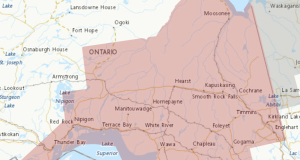In the early morning hours of November 8, 2022, North America will witness the last total lunar eclipse of the year. This amazing sky show will play out with Eastern, Atlantic and Newfoundland time zones seeing most of the event until moonset. The rest of North America will enjoy the late but spectacular show. This is a very safe event as the full Beaver moon (full moon for November) will pass through the earth’s shadow for a maximum of three hours and forty minutes.
Eclipses do not occur each month, due to the slight tilt of the moon’s orbit around earth. Some months the full or new moon is positioned above or below the earth’s shadow cast into space. There are a few times each year when the Sun, Earth and Moon line up to give us a solar or lunar eclipse. Each can be partially or totally covered. Throughout antiquity, the “Blood Moon” was an omen of the impending doom of war or even demons. Superstition ruled the skies in the early days.
The reddish or brownish-orange tinge of the lunar surface seen during totality is caused by the solar rays refracting through the earth’s atmosphere, much like we see spectacular red sunsets at night. The next lunar eclipse will only be a slight partial of 12% on October 28, 2023, visible from the Atlantic provinces. The next total eclipse which all of North America can witness will be on March 14, 2025.
Eclipse times are (Eastern Time):
Partial umbral eclipse begins: 4:09 a.m. Moon enters the earth’s shadow.
Total lunar eclipse begins: 5:16 a.m. Moon turns dark orange or red.
Greatest eclipse: 5:59 a.m. Mid-point of the eclipse.
Total lunar eclipse ends: 6:41 a.m. Moon begins to leave the shadow as it sets in the west.
Partial umbral eclipse ends: Moon ready set.
- Full Moon Names - June 10, 2025
- March Lunar and Solar Eclipses - March 4, 2025
- Winter Sky, Bright Planets - January 6, 2025
 Wawa-news.com You can't hear the 'big picture'!
Wawa-news.com You can't hear the 'big picture'!



